On this week's NewsFlash, we find out why an earthquake has put Giant Pandas in peril and how our lungs, and not just our tongues, can taste. Plus, the link between diabetes and the immune system, and Sarah Castor Perry takes us back to this week in Science History, and the death of nuclear chemist Otto Hahn.
In this episode

01:29 - Sad News for Pandas
Sad News for Pandas
Our listeners may remember the massive earthquake, measuring 8 on the Richter scale, that struck the Sichuan region of southern China in May 2008. Not only did it leave tens of thousands of people dead and 4.3 million homeless, but a new study shows it also means bad news for the few remaining giant pandas living in the wild...
This is research from Weihua Xu in Beijing, whose results are published in the journal Frontiers in Ecology and the Environment this week. The scientists carried out a survey of the habitat of giant pandas living in the South Minshan region, next the the epicentre of the earthquake, comparing it before and after the earthquake.
The researchers discovered that nearly a quarter of the panda habitat in this area had been destroyed, with much of the rest of it fragmented and damaged. This kind of damage greatly increases the chances of pandas becoming extinct in the wild, by breaking up the population, and destroying prime breeding and feeding sites.
Xu thinks that up to 60 per cent of the wild giant panda population may have been affected in some way by the earthquake. And given that the entire wild panda population is only around a thousand animals, that's pretty bad.
The researchers think that one good idea might be to develop specially protected 'corridors', encouraging pandas to move between the remaining patches of habitat. And because a lot of the earthquake damage happened in areas outside nature reserves, they suggest that these areas should be specially protected too. And, of course, they ask that towns and cities are rebuilt in a way that takes the pandas into consideration.
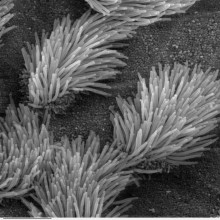
Tasty Lungs
Lungs with taste buds? You'd bitter believe it - Scientists have discovered that it's not just the tongue that's endowed with taste buds - cells lining the lung have them too. Writing in Science, University of Iowa researcher Alok Shah and his colleagues explain how they initially suspected that lung cells might be able to detect the presence of harmful substances within inhaled air and that this might trigger enhanced self-cleaning measures such as the production of more mucus.
To test the theory the team used in vitro genetic techniques to study which genes were being turned on in the cells lining the airways. Remarkably they found that thin hair-like extensions called cilia, which are on the airway cells' surfaces and make beating movements to move mucus out of the lungs, are equipped with the same family of chemical receptors that enable the tongue to taste bitter flavours. Only the cilia carry these receptors but the team found that when they are activated by adding bitter-flavoured chemicals the levels of calcium in the cilia-bearing cells shoots up.
This acts as a signal that the cells then pass amongst themselves via connections between adjacent cells called gap junctions. In this way the lining of the airway is able to orchestrate a response to the presence of potential toxins, inhaled chemicals and infections. The team also point out that certain bacteria, including Pseudomonas aeruginosa which is a major problem in cystic fibrosis patients, produce chemical signalling molecules called lactones, which can also activate these receptors. At the same time the discovery might also account for some of the damaging effects of cigarette smoking.
Nicotine is a characteristically bitter-tasting alkaloid and smoking frequently leads to cilia loss, which in turns hampers lung defenses. It could be that both of these effects are consequences of over-stimulation of these receptors and that perhaps blocking them can help to mitigate or reverse the damage. The next step will now be to study how this system functions in vivo to keep lungs clean and how it might be manipulated.
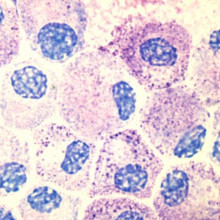
Immune link to diabetes
New research published in the journal Nature Medicine today suggests that scientists working on diabetes could do with cosying up to immunologists, as the latest data suggests that the two are much more closely linked than previously thought.
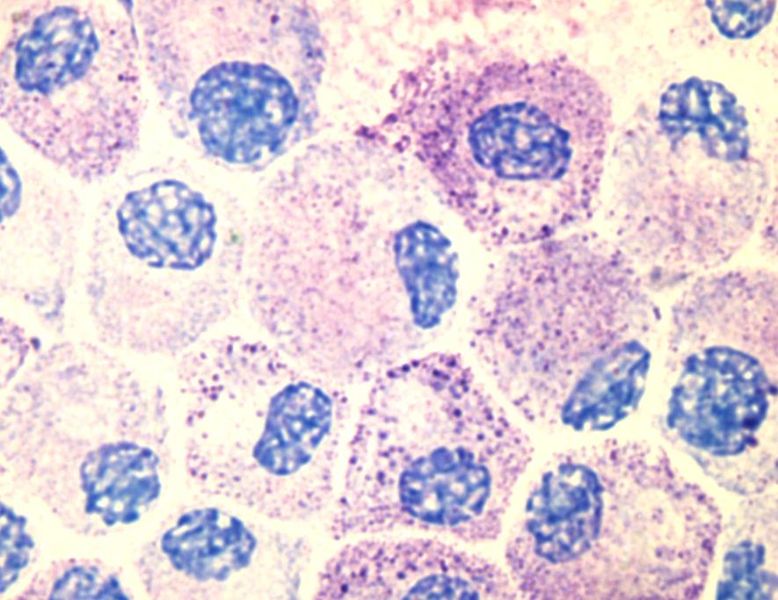 These are two papers published by scientists in the US. In the first study, researchers led by Guo-Ping Shi looked at two commonly-used allergy medicines, called Zaditor and cromolyn. These work by calming down mast cells, immune cells in the body that can provoke allergic reactions. But they also found that the drugs could help to reduce both obesity and type 2 diabetes in mice.
These are two papers published by scientists in the US. In the first study, researchers led by Guo-Ping Shi looked at two commonly-used allergy medicines, called Zaditor and cromolyn. These work by calming down mast cells, immune cells in the body that can provoke allergic reactions. But they also found that the drugs could help to reduce both obesity and type 2 diabetes in mice.
The researchers discovered that fat tissue from obese and diabetic mice and humans had unusually high numbers of these mast cells, compared with fat tissue from people with a normal weight. But was the fat attracting mast cells, or were the mast cells helping to trigger excessive deposition of fat?
To find out, the scientists tested the mast cell-controlling drugs on mice that were either given a healthy diet, or a fatty sugary diet. They found that the drugs helped to prevent mice from becoming obese or diabetic, even on a poor diet. But although the drugs are used to treat allergies in humans, we don't yet have evidence that they can prevent obesity or diabetes in humans.
In this paper, scientists led by Markus Feuerer discovered that a type of immune cell called a regulatory T cell plays a role in liaising between the immune system and the metabolism, by keeping inflammation in fat tissue in check. They found that fat tissue from obese and diabetic mice and humans has unusually low levels of these "good" regulatory cells, but had high levels of "bad" immune cells, such as inflammatory macrophages . They found the complete opposite in fat from animals and humans with a normal weight.
The results suggest that inflammation in fatty tissue may play a role in obesity and the development of types 2 diabetes. And it's also interesting because we know that being overweight or obese can increase your risk of diseases such as cancer and heart disease - two illnesses that are increasing being linked to inflammation. So this shows how it may all be connected.
It's important to stress that popping a few over-the-counter allergy remedies is not going to reverse obesity and magically make you thin, but the results certainly open the door to a whole new area of research - one that the scientists have dubbed "immunometabolism". And hopefully it should lead to some more important results in years to come.
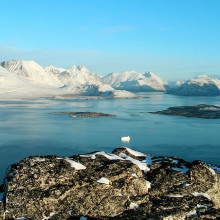
11:06 - Moving Mountains
Moving Mountains
Taylor Perron, MIT, USA
Chris - Now if you glance out of the airplane window as you're surging, not across the ocean, but across land, how could you have missed those wonderful ridges and valleys you see and not fail to notice that they form very regular patterns? It's almost like the teeth of a comb. Why should that be? Is it just a freak of nature or is there actually a mechanistic reason why it's happening? Well Dr Taylor Perron, who's a researcher at MIT in America, has got a paper in the journal Nature this week, and he and his colleagues have cracked the reason it happens. Hello, Taylor.
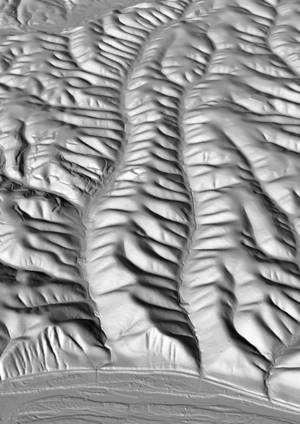 Taylor - Hi Chris.
Taylor - Hi Chris.
Chris - Welcome to the Naked Scientists. Tell us why do we see these amazing patterns in nature?
Taylor - Well, we started wondering about this pattern for the same reason that the people you just referred to looking at the airplane window did. Whenever you see a pattern that's this regular and widespread in nature, it's got to be telling you something about the physics that are generating it.
Chris - So we're talking here about the way you see a hillside, then a ridge or a river right between it then another hillside and so on. You get that beautiful repeating pattern.
Taylor - That's right. It's been recognised by geologists for more than a century that there is this very even spacing among rivers or, equivalently, between the ridges that separate them.
Chris - So how did you set about trying to solve this conundrum?
Taylor - We first put together a theoretical model that was based on some field observations we made. So we went to a bunch of sites around the United States where we saw this pattern very well-expressed and we looked on the ground to see what was happening there, shaping the landscape. And we ended up putting together a model that combines two basic processes that are competing against one another that creates this even spacing of ridges and valleys.
Chris - And what are they?
Taylor - And it's a basic balance between one set of processes and chief among them is river incision that de-soils a rock; that tends to cut into landscape and create valleys. That tends to make them spaced more closely together. But competing against river incision is soil creep which is the gradual down-slope movement of soil due mainly to stirring by organisms that are burrowing in the ground. And that tends to fill in the valleys, round-off the ridge lines and make them spaced more widely apart.
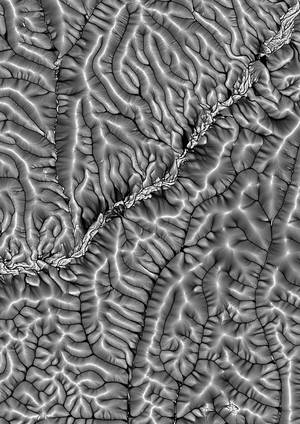 Chris - But why should they be so regular though, Taylor? Why not just have a few here and there? Why this beautiful regular pattern we see?
Chris - But why should they be so regular though, Taylor? Why not just have a few here and there? Why this beautiful regular pattern we see?
Taylor - Well, there's an interesting story there too and it actually has a bit of a Darwinian flavour to it. This is one of the best parts of the study for us. This is a pattern that emerges over many thousands of years. By writing the equations to describe these erosion processes and solve them into a computer we could fast-forward the evolution of the landscape over those many thousands of years. And here's what we see happening:- when a landscape first starts to form, the initial valleys that develop are unevenly spaced. But some of them are a little bit larger than others and some of them are farther from their neighbours than others. The ones that start out bigger or spaced farther from their neighbours are able to capture more water and, therefore, erode more rapidly. And they grow faster and they pinch out their smaller neighbours. And so it's this competition for water that ultimately leads to an even spacing.
Chris - So presumably, you can tweak your formula to accommodate the fact that some areas of Earth are dryer, some are wetter, some have harder rocks, some have softer rocks, and all of those things will presumably affect this erosion competition that you've got going on.
Taylor - It's exactly this that we're ultimately trying to get at: how do major factors like the type of rock that the landscape is made of, like the intensity of biological activity and climatic effects like rainfall influence this wavelength? And by comparing these different sites and also using the theoretical model to explore this, we have found that there are some pretty significant effects there. For example, if you have a landscape that's eroded into harder rock the ridges and valleys will generally be spaced wider apart. We also have found that in places that are wetter where they'd get more mean annual rainfall you also have wider valley spacing. So there very definitely are some fundamental controls on this pattern.
Chris - So given that you've got this very old record of erosion and you can infer and you now know because of your formula, how they form and over what sorts of rates. Does this mean that written into the landscape is quite literally a record of past climate in the form of rainfall because of the erosion pattern?
Taylor - That's right. And that is one of the things that this pattern is recording. The challenge for us next is teasing out the relative importance of these different effects. So for example, we know that rainfall has this effect of making valleys spaced wider apart but we're not exactly sure of what the absolute magnitude of that effect is in a given place because it's kind of convolved with the bedrock strength and other factors. But ultimately, yes, there is a record here that we can start to interpret now.
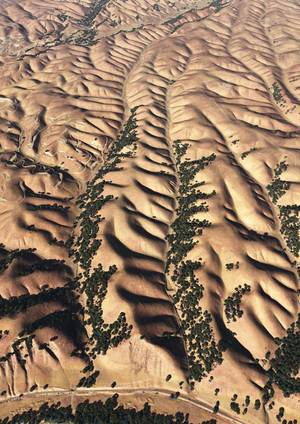 Chris - And just very briefly to finish, the last time I spoke with you, you were discovering why the coastline of an ancient ocean on Mars seemed to rise and fall by up to three kilometres in places. Does this work also inform those amazing rivers and valley type systems that we think we can see on Mars with Mars Express and the other things that are looking at the surface of Mars from space?
Chris - And just very briefly to finish, the last time I spoke with you, you were discovering why the coastline of an ancient ocean on Mars seemed to rise and fall by up to three kilometres in places. Does this work also inform those amazing rivers and valley type systems that we think we can see on Mars with Mars Express and the other things that are looking at the surface of Mars from space?
Taylor - I think it does. One of the things that first inspired us to look into this problem was not just observations of landscapes on Earth but also images that we saw of Mars where you do see mind-bendingly irregular patterns of erosional features on the sides of impact craters all over the planet. And although the same exact processes are not at work, clearly the soil creep on Mars is not driven by biological activity but more likely by, say, the activity of ice in the ground. We think it's the same basic competition between valley cutting and valley filling processes that does it there. So one of the - part of the appeal of this is that we can now go to landscapes either on earth or another planets where all we have is remote observations and start to learn something about how the landscape is developed over many years.
Chris - So it's not just aliens then. Thank you very much Taylor.
Taylor - That's right.
Chris - Dr. Taylor Perron. He is the researcher at MIT in America. He's got a paper in this week's Nature, explaining why we see those regular patterns of ridges and valleys forming across the landscape.
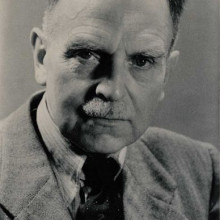
17:13 - This week in science history - the death of Otto Hahn
This week in science history - the death of Otto Hahn
Sarah Castor-Perry
This week in science history saw, in 1968, the death of Otto Hahn, the German chemist who co-discovered nuclear fission, was a courageous opposer of Jewish persecution by the Nazis, a campaigner against the use of nuclear power as a weapon and is considered by many to be the father of nuclear chemistry...
Born in March 1879 in Frankfurt, Hahn showed an interest in chemistry from a young age. Instead of following his father's wishes that he become an architect, he would perform chemistry experiments in the family laundry room as a child, and after leaving school went to study chemistry at the universities of Marburg and Munich. He completed his doctorate in organic chemistry in 1901.
In the early years of the 20th Century, Hahn worked at University College London, where he discovered the radioactive substance radiothorium (later shown to be an isotope of the element thorium). He moved in 1905 to McGill University in Canada to work under Ernest Rutherford, the eminent nuclear physicist. Here he discovered three more radioactive substances - Thorium C, radium D and radioactinium. Returning to Germany, in 1906 Hahn discovered what he called mesotherium 1 - now known as radium 228. This element has become hugely important in the medical world as a cheaper alternative to radium 226, discovered by Pierre and Marie Curie. This discovery led to his first Nobel Prize nomination in 1914, although he did not win.
His research was interrupted by the First World War, where he was conscripted to the research team looking into producing poison gas for use in the trenches. In 1916 he returned to Berlin, and after the war resumed research into radioactive substances with his collaborator and friend Lise Meitner, developing a new field of research known as Applied Radiochemistry.
In 1938 the Nazis carried out the Austrian Anschluss. This made life very difficult for Meitner - she was of Jewish descent and lost her Austrian citizenship. With Otto Hahn's help, she managed to escape to Sweden, and the two remained in contact throughout the Second World War.
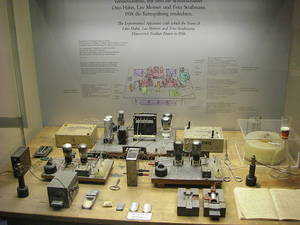 In December of 1938, Hahn and his assistant Fritz Strassman made the discovery that won Hahn the 1944 Nobel Prize for Chemistry - the discovery of nuclear fission. Other scientists such as Enrico Fermi and Ida Noddack had suggested that bombarding heavy nuclei such as uranium might lead to the production of smaller nuclei, and Fermi and his team had already begun experiments in 1934. However, it was Hahn and Strassman who succeeded in producing barium atoms as a product of the fission process. Their results were proven by Lise Meitner's nephew, also in exile in Sweden, in January 1939.
In December of 1938, Hahn and his assistant Fritz Strassman made the discovery that won Hahn the 1944 Nobel Prize for Chemistry - the discovery of nuclear fission. Other scientists such as Enrico Fermi and Ida Noddack had suggested that bombarding heavy nuclei such as uranium might lead to the production of smaller nuclei, and Fermi and his team had already begun experiments in 1934. However, it was Hahn and Strassman who succeeded in producing barium atoms as a product of the fission process. Their results were proven by Lise Meitner's nephew, also in exile in Sweden, in January 1939.
Nuclear fission is a nuclear reaction that involves the breakdown of a large nucleus of an atom such as Uranium 235 or Plutonium 239 into several smaller atomic nuclei, usually initiated by bombarding the nucleus with particles called neutrons. As well as fission products such as Strontium and Xenon, the reaction also releases neutrons, electromagnetic waves and a lot of energy in the process - around 10 million times more energy than a chemical fuel such as gasoline or TNT. It is what powers nuclear power stations and nuclear weapons.
Hahn continued to work on nuclear fission throughout the Second World War, whilst also intervening on behalf of colleagues being persecuted or threatened by the Nazis. Captured by British forces in 1945 as part of Operation Epsilon and transported to Cambridgeshire, Hahn and nine fellow captured German chemists and physicists learned of the American atomic bomb attacks on Hiroshima and Nagasaki. Hahn was so distraught that the process he had discovered had been used to kill so many people that he contemplated suicide. Unlike some of the other German scientists present, he had played no part in Germany's atomic bomb development team.
Throughout the later years of his life he campaigned passionately against the use of nuclear energy as a weapon - suggesting that using the discovery in this way was a crime - and was repeatedly nominated for the Nobel Peace Prize. His integrity and scholarly excellence drew this phrase from the Max Planck Institute as part of his obituary in 1968 - 'His name will be recorded in the history of humanity as the founder of the atomic age...The Max Planck Institute mourns its founder...and a good and much loved human being', and in 1999, he was voted in the German FOCUS magazine to be the third most important scientist of the twentieth century, after Albert Einstein and Max Planck.
Related Content
- Previous Setting the Pace
- Next Rubbish!










Comments
Add a comment